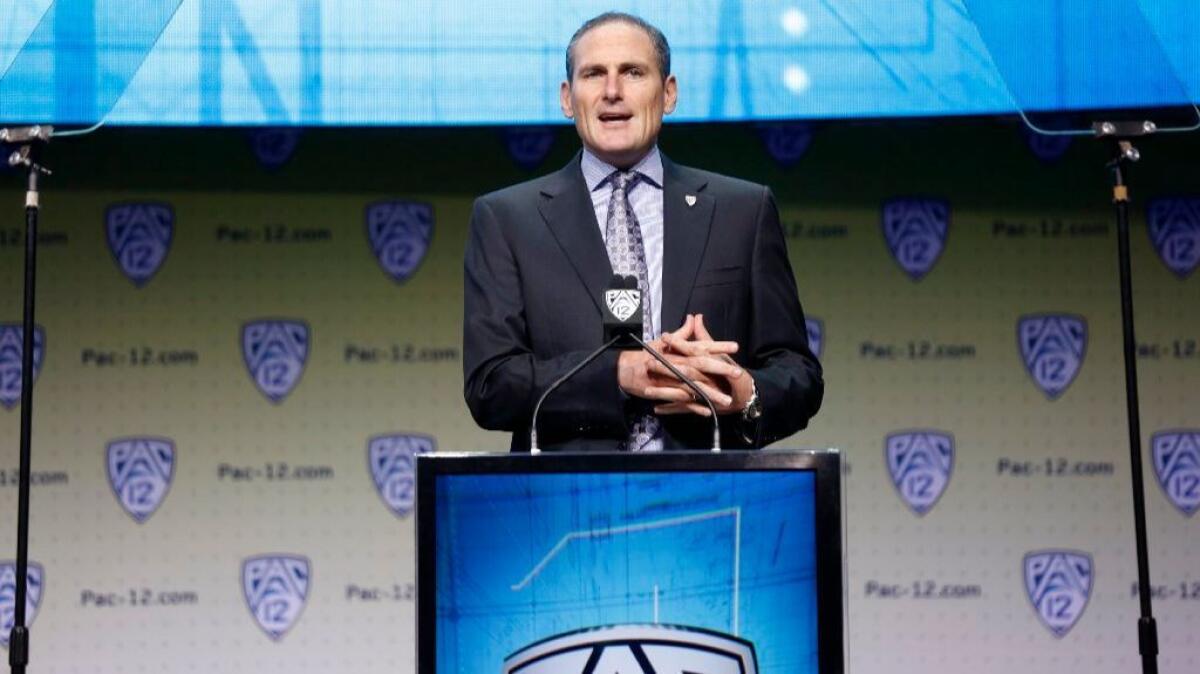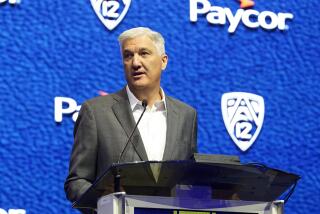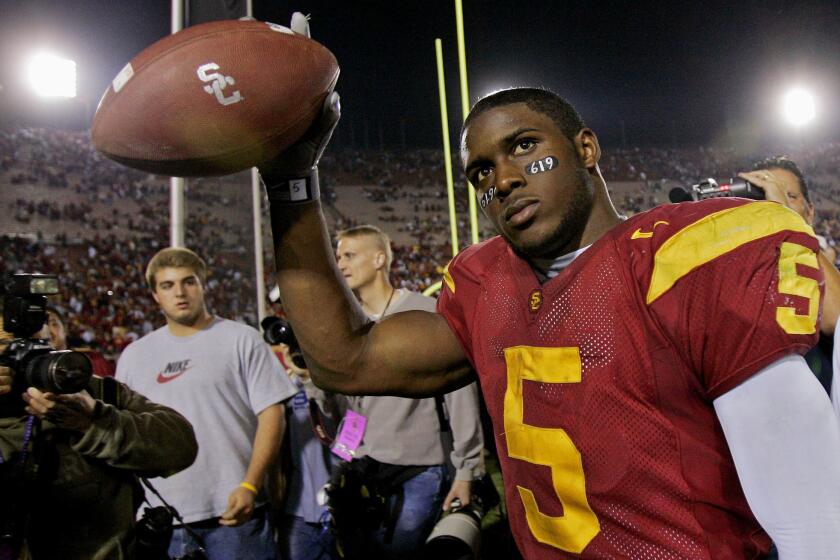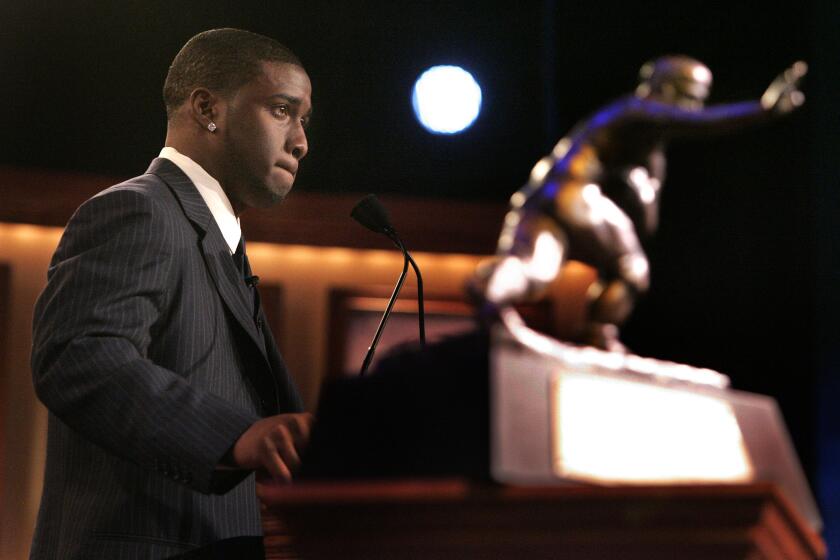Pac-12 Networks’ revenue dwarfed by SEC, Big Ten counterparts

Earlier this year, Bill Moos, Washington State’s athletic director, did what a lot of spurned Pac-12 Conference fans have done at one time or another during the last five years: He complained about the Pac-12 Networks.
“We were hoping for $5 million to $6 million when we were launching,” Moos said during an interview with the San Francisco Chronicle. “There was never a guarantee, but we were optimistic because we owned it outright.”
Almost five years after its launch, the network isn’t even close to those projections. The conference doesn’t disclose profit figures for the network, but an analysis of financial filings by the San Jose Mercury News estimated each school would get about $2.5 million in 2017.
For comparison, a year ago Forbes estimated that both the Southeastern and Big Ten conferences made roughly $125 million from their own networks, or about $8 million per school.
In overall distributions from all sources in the last fiscal year, the Big Ten paid an average of almost $35 million to each school. The SEC paid $40.5 million.
The Pac-12 paid roughly $29 million.
The SEC and Big Ten have used those funds to pay for grand training facilities and for lucrative coaching contracts. Seven of the top 10 highest-paid coaches in the nation came from those conferences, according to a USA Today database. The Pac-12’s highest paid coach, Stanford’s David Shaw, was No. 19. (USC did not disclose Coach Clay Helton’s pay.)
In an interview at the Pac-12’s media days in Hollywood on Wednesday, Larry Scott defended the network’s performance. He said the network’s original vision was to expand exposure of its Olympic sports and to provide deeper coverage of football and basketball.
“It really has hit a lot of the objectives that we had for it,” he said. “What’s also true is that our schools hope it’s going to generate more money.”
He added: “Revenue is an important ingredient to success, but success is measured by winning. And we win more than anyone.”
Asked if he was concerned that the money in the Big Ten and SEC could cut into that edge, Scott noted that the Pac-12 had won more than 200 national championships. “We’ve never had more money than any other conference,” he said. “I’ll just leave it at that.”
The Pac-12’s biggest disadvantage is its subscriber base. The network has 19.1 million subscribers to its mother network, according to SNL Kagan, an industry consulting and research firm. (Pac-12 Los Angeles has 3.7 million.) The SEC Network has about three times as many subscribers.
Scott said there was “no new news” on negotiations with DirecTV, which does not carry the Pac-12 Networks. DirecTV alone has about 21 million domestic subscribers, according to parent company AT&T’s most recent financial filings.
The Pac-12’s decision to take complete ownership of the network, once welcomed by officials such as Washington State’s Moos, actually gives it a poorer negotiating position. ESPN sells the SEC Network under a licensing deal and the Big Ten Network is a joint venture with Fox Cable Networks, which is the majority owner. Both were able to negotiate more lucrative deals.
But Scott said he believes the ownership structure now gives the conference more flexibility to navigate a changing television marketplace. The network recently signed deals with “over the top” providers such as Sling and CenturyLink, which will offer the Pac-12 Networks in its streaming bundles.
“On the one hand, we don’t have their leverage in the marketplace today,” Scott said. “On the other hand, we’re completely independent. We’ve got control. And we’ve got maximum flexibility going forward.”
Follow Zach Helfand on Twitter @zhelfand
More to Read
Go beyond the scoreboard
Get the latest on L.A.'s teams in the daily Sports Report newsletter.
You may occasionally receive promotional content from the Los Angeles Times.







